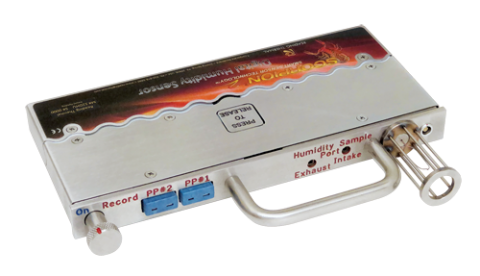Humidity in industrial bakery oven systems affects baking times and alters the texture and outcome of your finished products. The Scorpion® 2 Profiling System from Reading Thermal enables you to ensure that your oven conditions are well-suited to your processing needs and shelf-life requirements.
Located in Sinking Spring, Pennsylvania, Reading Thermal has focused on measuring and understanding the commercial baking process for over 25 years. We manufacture the SCORPION® 2 Profiling System and Data Logger, which is a standard in the baking industry and offers you an easy way to monitor actual oven in-process conditions.
Importance of Humidity Profiling
Products that pass through a thermal process interact with the amount of moisture in the environment. A lot of this moisture comes from the products themselves and represents a delicate balance that can affect your finished products in a variety of ways, such as:
- High oven humidity can increase the volume of your baked goods.
- High oven humidity can lighten crust color.
- High oven humidity can soften crisp crusts and make crackers lose their crunch.
- Too little humidity can cause excessive blisters to develop on crackers, which burn easily and cause undesirable dark spots.
- Too little moisture in a finished product can increase breakage during the packaging process.
- Too little moisture can cause goods that should be soft and moist to overbake and become tough or dry.
- Reducing evaporation can keep the surface of a cookie moist, allowing it to stretch and preventing cracks.
- The amount of moisture left in a pretzel after baking will affect its shelf life.
Using quality ingredients and careful handling through the various production stages are not enough to create a high-quality product unless the temperature and humidity of the oven are carefully monitored and regulated.
Digital Humidity Sensor Advantages
The SCORPION® Digital Humidity Sensor is an excellent way to measure humidity in your oven, proofer, dryer, and cooling tunnel.
Mechanically, the Digital Humidity Sensor includes an Air Temperature sensor, two inputs for Product Core Temperature Measurement, and a proprietary humidity sampling system to measure Dew Point Temperature, Absolute Humidity, and Relative Humidity.
Its breakthrough design provides a more accurate and reliable way to measure the absolute moisture content of the thermal environment. The sensor contains a proprietary humidity sampling system with patent pending Anti-Saturation Technology™ that allows measurements in high temperature and very high dew point processes.
The Digital Humidity Sensor is engineered to be compatible with direct gas fired (DGF) ovens. Unlike oxygen sensor technology, which can be off by as much as 25% due to combustion gases in DGF ovens, the accuracy of the Digital Humidity Sensor remains the same regardless of the oven platform.
If your manufacturing process results in inconsistent product quality, moisture retention, or uneven baking, consider our other state-of-the-art sensors and sensor arrays, such as the SCORPION® 2 Temperature Sensor Array, the SCORPION® 2 Air Velocity Sensor, and the SCORPION® 2 Heat Flux Sensor.
Get in touch with Reading Thermal to learn more about profiling oven humidity during your baking processes, and how the SCORPION® 2 Profiling System can help you make adjustments that will achieve higher quality products. Contact us online or call us at (610) 678-5890 Ext. 2.

